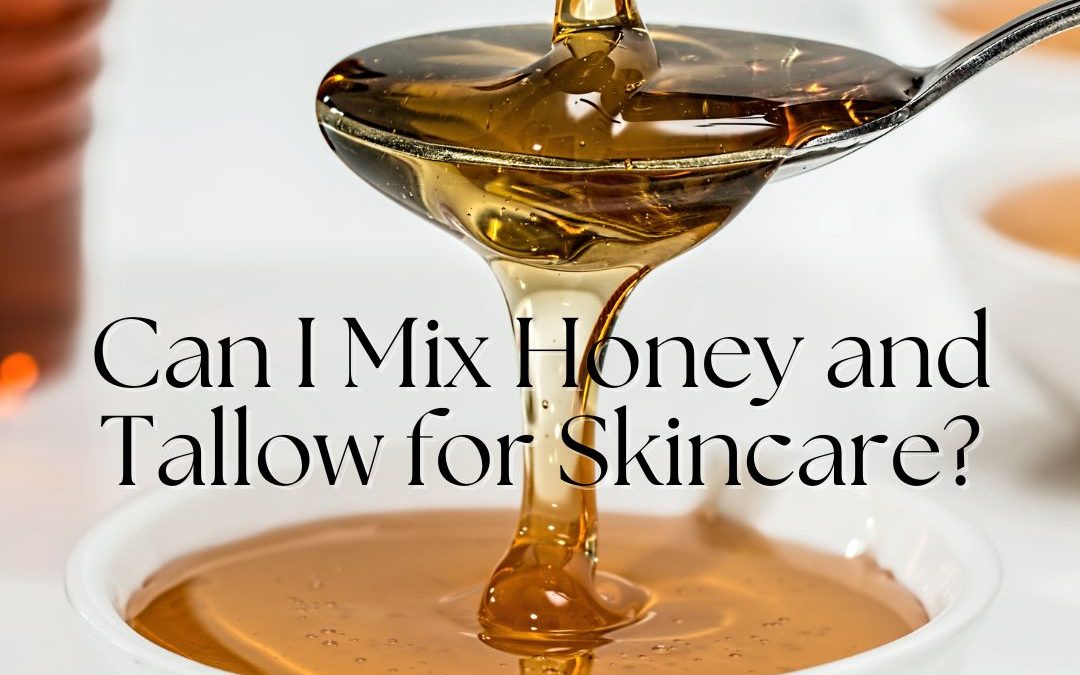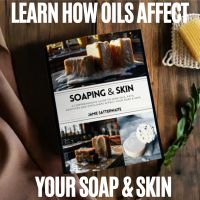This post may contain affiliate links, to learn more about them, check out our Disclosure.
Honey and tallow are both celebrated for their remarkable skincare benefits. Honey, with its natural humectant properties and antibacterial benefits, and tallow, rich in nourishing fatty acids, seem like a match made in skincare heaven. But if you’ve ever tried mixing the two, you’ve likely encountered a frustrating challenge: they don’t combine easily. Why is that? Let’s explore the science behind mixing honey and tallow, why you need an emulsifier, and why a preservative is essential for a safe and effective product.
Why Don’t Honey and Tallow Mix?
The main reason honey and tallow don’t mix lies in their fundamental properties:
- Honey is water-based. Honey contains a high percentage of water (about 18%) along with natural sugars and enzymes. It is hydrophilic, meaning it attracts water.
- Tallow is fat-based. Tallow is composed almost entirely of lipids (fats), making it hydrophobic, or water-repellent. It does not naturally bond with water-based substances like honey.
When you attempt to combine honey and tallow without an emulsifier, the two will separate because oil and water don’t mix on their own. This separation can lead to an unstable product that is difficult to use and prone to spoilage.
The Role of an Emulsifier
To create a stable mixture of honey and tallow, you need an emulsifier. Emulsifiers are ingredients that bind oil and water-based components together, creating a smooth and homogenous texture. Common emulsifiers include:
Glyceryl Stearate (and Variants)
- Source: Derived from glycerin and stearic acid (plant-based).
- Type: Natural or semi-synthetic.
- Uses: Excellent for thick, creamy textures like body butters and rich lotions.
- Drawbacks: Requires a stabilizer for some formulations.
Cetearyl Alcohol + Ceteareth-20
- Source: Fatty alcohols derived from plant oils.
- Type: Semi-natural.
- Uses: Common in creams and lotions, providing stability and a smooth texture.
- Drawbacks: Requires proper pH balancing for optimal performance.
Emulsifying Wax (e.g., Polawax, BTMS)
- Source: Derived from vegetable-based fatty acids.
- Type: Synthetic or semi-natural.
- Uses: Highly reliable for creating stable oil-in-water emulsions; suitable for lotions and creams.
- Drawbacks: Not entirely natural, depending on the specific product.
By using an emulsifier, you can create a product where honey and tallow remain uniformly combined, ensuring even application and consistent benefits for the skin.
Why Does a Honey and Tallow Mixture Need a Preservative?
When honey and tallow are combined, the potential for microbial growth increases significantly, especially if water or moisture is introduced into the product. Here’s why a preservative is essential:
- Honey’s water content attracts microbes. Although raw honey has natural antibacterial properties, its water content makes it a breeding ground for bacteria, mold, and yeast when diluted or mixed with other ingredients.
- Tallow’s fats can go rancid. While tallow is stable at room temperature, introducing moisture (like the water content in honey) can accelerate spoilage and rancidity.
- Skincare products are exposed to contamination. Each time you dip your fingers or a tool into a jar of product, you introduce bacteria and other microbes. Without a preservative, the product can quickly become unsafe to use.
Want to learn more about preservatives? Check out our Blog Post Understanding Preservatives for Skin Care! Be sure to follow us on YouTube for more skin care making videos!



